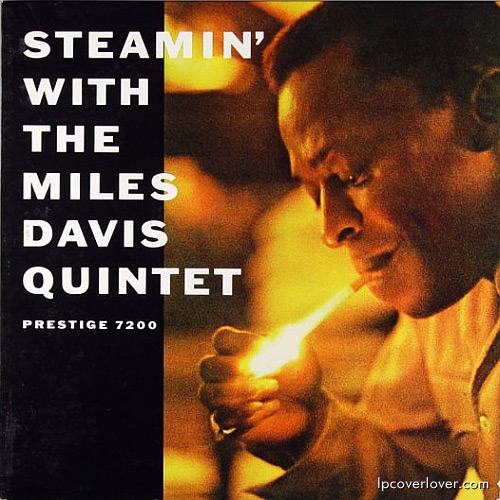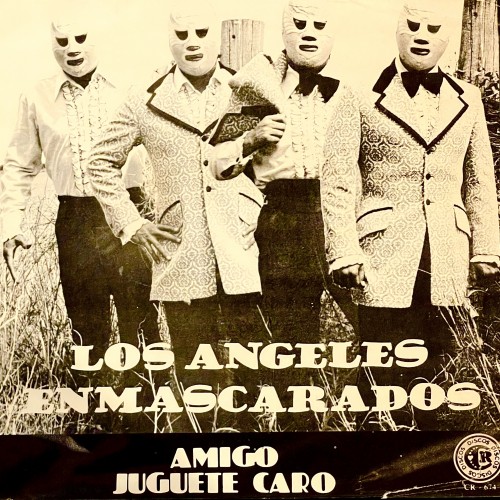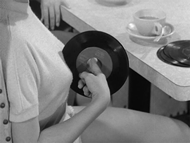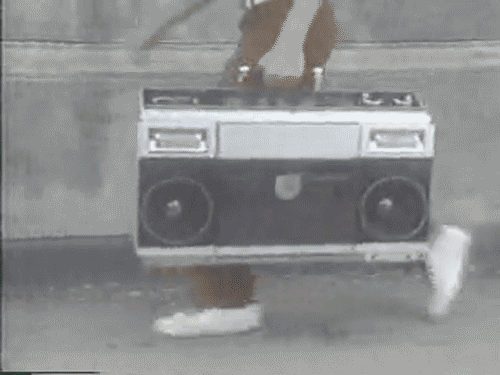
Red Rodney A nice Prestige 10″ Features Jim Ford, Phil Raphael, Phil Leshin, and Phil Brown. Tracks: The Baron, This Time the Dream’s On Me, Mark, If You Are But a Dream, Red Wig, Smoke Gets in Your Eyes, Coogan’s Bluff
Robert Chudnick (Red Rodney), trumpeter and bandleader: born Philadelphia 27 September 1927; died Boynton Beach, Florida 27 May 1994.
AS THE FIRST white Bebop trumpet player, Red Rodney had one of the most prized jobs in jazz, playing trumpet in the quintet of the altoist Charlie Parker.
In 1945, when Rodney was 17, he was befriended by another trumpeter, Dizzy Gillespie, who in turn introduced him to Charlie Parker and the black musicians of New York.
‘I heard Charlie Parker and that was it’, said Rodney, ‘That was what I wanted to do with the rest of my life.’ He became one of the first generation of Bebop trumpet players. The others were Gillespie, Miles Davis, Fats Navarro and Kenny Dorham – Rodney survived them all.
In 1950 Parker was offered a very lucrative tour of the southern states by his agent Billy Shaw.
‘You gotta get rid of that redheaded trumpet player. We can’t have a white guy in a black band down south,’ Shaw told Parker.
‘I ain’t gonna get rid of him. He’s my man. Ain’t you ever heard of an albino? Red’s an albino,’ claimed Parker.
Rodney knew nothing of this until the quintet arrived for the first job of the tour at Spiro’s Beach in Maryland, where he was surprised to find a poster reading ‘The King of Bebop, Charlie Parker and His Orchestra featuring Albino Red, Blues Singer’.
‘You gotta sing the blues, Chood baby,’ said Parker (‘Chood’ was his nickname for Rodney, derived from the trumpeter’s real name, Chudnick).
When Parker died in 1955, Rodney joined Charlie Ventura for a short time, but his life became overwhelmed by his drug addiction and he left music altogether in 1958. He drifted to Las Vegas where, as a drug addict, he became a familiar of the local vice squad. He was sentenced several times to the federal narcotics hospital at Lexington, Kentucky.
One day he saw a photograph in a newspaper of one General Arnold T. MacIntyre. ‘Hey,’ he said, ‘I look like this cat’ A scheme took shape in his mind. A friendly printer forged some credit cards for him in MacIntyre’s name and 20 cheques, each for $1,840, the average monthly salary of a major- general. Rodney dyed his hair grey and bought a major-general’s uniform. Suitably equipped, he would walk into a bank and present himself as General MacIntyre, ask to see the manager, and flash his wad of credit cards. Using these methods he managed to live a life of luxury for a year.
He gave up drugs in 1978, his wife Helene called him ‘a born- again virgin’, and his career took off again when he formed a band with his fellow trumpeter Ira Sullivan and the pianist Gary Dial. Rodney took up the fluegelhorn to great effect. Playing better than ever before, he was in demand all over the world for clubs, concert halls and festivals and in his final years some of the best musicians of the younger generation, notably the remarkable alto player Chris Potter, queued up to join his band.

Loading ...



 (23 votes, average: 4.78 out of 5)
(23 votes, average: 4.78 out of 5)










